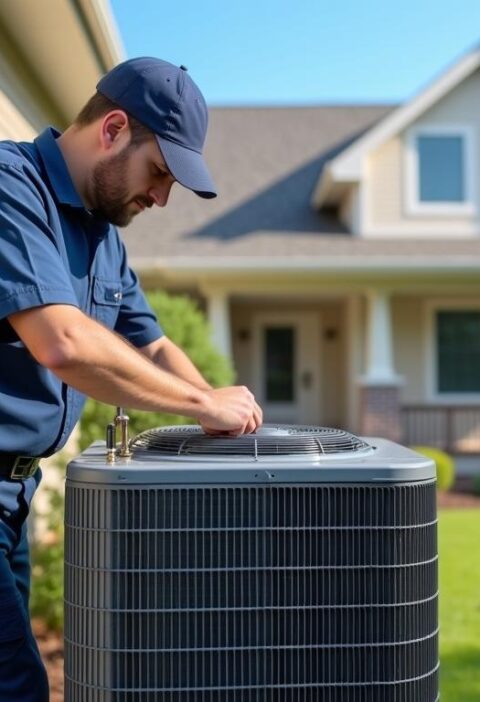Maintaining a lush, green lawn is a dream for many homeowners and turf managers. However, achieving this requires more than just occasional mowing. It involves a deep understanding of the soil, proper care techniques, and tools.
From selecting the best lawn seeder to implementing eco-friendly practices, let’s dive into the essentials of turf maintenance to keep your lawn looking its best all year round. Whether you’re managing a small garden or a large field, these principles remain the same. You can enjoy a healthy and aesthetically pleasing lawn by dedicating time and effort to understanding the nuances of turf care.
Importance of Soil Health
The foundation of any healthy lawn is good soil. Soil that is rich in nutrients provides the necessary support for strong grassroots. Conducting regular soil tests helps identify nutrient deficiencies and allows for appropriate amendments. Adding organic matter, such as compost or well-rotted manure, can significantly improve soil structure and fertility.
Moreover, ensuring proper pH levels is crucial as it affects the availability of essential nutrients to the grass. Typically, a pH range of 6.0 to 7.0 is ideal for most turfgrass species. Remember, healthy soil is the bedrock of a resilient and thriving lawn.
Essential Lawn Care Techniques
- Mowing: Regular mowing is crucial, but to prevent stress, do not cut more than a third of the grass height at once. The right mowing height varies with grass species, but generally, maintaining a height of 2.5 to 3.5 inches is beneficial. It’s also advisable to keep the mower blades sharp to ensure a clean cut, reducing the risk of disease.
- Watering: Deep, infrequent watering promotes deeper root growth. Aim for about 1 inch of water per week from rainfall or irrigation. Early morning is the best time to water, as it reduces evaporation and allows grass to dry before nightfall, minimizing disease risk.
- Aeration: Aerating the lawn helps reduce soil compaction, allowing roots to access more air, water, and nutrients. This can be done using a manual or mechanical aerator. Aerate during the growing season when the grass can quickly recover for best results.
- Fertilizing: Use a balanced fertilizer at the right time of the year to ensure your grass gets the nutrients it needs. For instance, a high-nitrogen fertilizer can boost growth in the spring, while a slow-release fertilizer can maintain health throughout the growing season.
Tackling Turf Diseases
Turf diseases like brown patches, dollar spots, and rust can wreak havoc on your lawn. Recognizing symptoms early, such as discolored patches or unusual growth patterns, can help you take action quickly. Proper watering practices and maintaining healthy soil can deter many common turf diseases. It’s also important to select disease-resistant grass varieties suited to your local climate.
Check out this comprehensive guide for more on identifying and treating turf diseases. Regular monitoring and early intervention can prevent minor issues from becoming major problems, ensuring your lawn remains lush and green.
Tools for Effective Turf Management
Having the right tools makes maintaining your turf much easier. Key equipment includes:
- Lawnmower: A reliable, sharp blade is crucial. Investing in a good quality mower that matches your lawn size can save time and effort.
- Aerator: Manual or mechanical, depending on the lawn size. Aerating once or twice a year can greatly improve soil structure and health.
- Sprinkler system: Ensures even watering. Automated systems with timers can optimize water usage, especially during dry spells.
- Soil tester: These testers are essential for making informed decisions about fertilization and soil amendments. They are used for regular nutrient and pH level checks.
These tools and equipment help maintain a healthy and vibrant lawn with less effort. Regular maintenance and timely interventions with the right tools can improve turf quality. Additionally, you can hire a professional Charlotte lawn care company (or one anywhere else) to make sure your lawn is safe and healthy.
Eco-Friendly Turf Care Practices
Sustainable practices are good for the environment and for your turf in the long run. Consider using organic fertilizers and pest control methods to reduce harmful chemical use. Additionally, drought-resistant grass varieties should be opted for to conserve water.
For instance, choosing water-efficient irrigation products can save both water and money. Integrated Pest Management (IPM) strategies, which combine biological, cultural, and mechanical controls, can effectively manage pests with minimal environmental impact. Mulching grass clippings instead of bagging them can also return valuable nutrients to the soil, promoting a healthier lawn.
Conclusion
Caring for your lawn involves proper soil management, regular maintenance practices, and the right tools. By understanding the needs of your turf and implementing eco-friendly practices, you can enjoy a healthy, vibrant lawn with minimal effort.
Remember, a beautiful lawn doesn’t happen overnight, but with consistent care and attention, you can achieve the lush, green turf of your dreams. Patience and persistence, paired with informed strategies, will ultimately lead to a thriving, resilient lawn that enhances your outdoor space’s aesthetic and ecological value.







